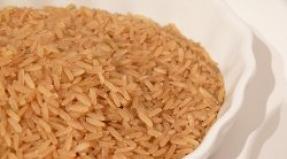Amosin, powder for oral suspension. How to take Amosin: instructions for use Amosin tablets from what
Antibiotic of the group of semisynthetic penicillins with a broad spectrum of action. It is a 4-hydroxyl analogue of ampicillin. Has a bactericidal effect. Active against aerobic gram-positive bacteria: Staphylococcus spp. (with the exception of strains producing penicillinase), Streptococcus spp .; aerobic gram-negative bacteria: Neisseria gonorrhoeae, Neisseria meningitidis, Escherichia coli, Shigella spp., Salmonella spp., Klebsiella spp.
Microorganisms that produce penicillinase are resistant to amoxicillin.
In combination with metronidazole, it is active against Helicobacter pylori... It is believed that amoxicillin inhibits the development of resistance of Helicobacter pylori to metronidazole.
Cross-resistance exists between amoxicillin and ampicillin.
The spectrum of antibacterial action expands with the simultaneous use of amoxicillin and a beta-lactamase inhibitor clavulanic acid. This combination increases the activity of amoxicillin against Bacteroides spp., Legionella spp., Nocardia spp., Pseudomonas (Burkholderia) pseudomallei. However, Pseudomonas aeruginosa, Serratia marcescens, and many other gram-negative bacteria remain resistant.
Pharmacokinetics
When taken orally, amoxicillin is rapidly and completely absorbed from the gastrointestinal tract, it is not destroyed in the acidic environment of the stomach. Cmax of amoxicillin in blood plasma is achieved after 1-2 hours. When the dose is doubled, the concentration also doubles. In the presence of food in the stomach, it does not decrease the total absorption. With intravenous, intramuscular and intramuscular administration, similar concentrations of amoxicillin are achieved in the blood.
Plasma protein binding of amoxicillin is about 20%.
It is widely distributed in tissues and body fluids. Reported on high concentrations amoxicillin in the liver.
T 1/2 from plasma is 1-1.5 hours. About 60% of the dose taken orally is excreted unchanged in the urine by glomerular filtration and tubular secretion; at a dose of 250 mg, the concentration of amoxicillin in the urine is more than 300 μg / ml. A certain amount of amoxicillin is determined in the feces.
In newborns and the elderly, T 1/2 may be longer.
With renal failure, T 1/2 can be 7-20 hours.
In small amounts, amoxicillin penetrates the BBB during inflammation of the pia mater.
Amoxicillin is removed by hemodialysis.
Release form
Powder for the preparation of a suspension for oral administration, white with a yellowish tinge, with a specific odor; prepared suspension of white with a yellowish tinge color, with a specific odor.
Excipients: polyvinylpyrrolidone (povidone), dextrose, ethylenediaminetetraacetic acid disodium salt (Trilon B), sodium phosphate disubstituted, sodium glutamate monohydrate, food flavor, vanillin, sucrose.
1.5 g - single-dose packages (10) - cardboard packs.
Dosage
Individual. For oral administration single dose for adults and children over 10 years old (weighing more than 40 kg) is 250-500 mg, with severe course diseases - up to 1 g. For children aged 5-10 years, a single dose is 250 mg; at the age of 2 to 5 years - 125 mg; for children under 2 years old daily dose is 20 mg / kg. For adults and children, the interval between doses is 8 hours. In the treatment of acute uncomplicated gonorrhea - 3 g once (in combination with probenecid). In patients with impaired renal function with CC 10-40 ml / min, the interval between doses should be increased to 12 hours; with CC less than 10 ml / min, the interval between doses should be 24 hours.
For parenteral use in adults i / m - 1 g 2 times / day, i / v (with normal renal function) - 2-12 g / day. Children in / m - 50 mg / kg / day, single dose - 500 mg, frequency of administration - 2 times / day; i / v - 100-200 mg / kg / day. Patients with impaired renal function, the dose and the interval between injections should be adjusted in accordance with the CC values.
Interaction
Amoxicillin may decrease the effectiveness of oral contraceptives.
With the simultaneous use of amoxicillin with bactericidal antibiotics (including aminoglycosides, cephalosporins, cycloserine, vancomycin, rifampicin), synergism is manifested; with bacteriostatic antibiotics (including macrolides, chloramphenicol, lincosamides, tetracyclines, sulfonamides) - antagonism.
Amoxicillin enhances the effect indirect anticoagulants suppressing the intestinal microflora, reduces the synthesis of vitamin K and the prothrombin index.
Amoxicillin reduces the effect of drugs, in the process of metabolism of which PABA is formed.
Probenecid, diuretics, allopurinol, phenylbutazone, NSAIDs reduce the tubular secretion of amoxicillin, which may be accompanied by an increase in its concentration in the blood plasma.
Antacids, glucosamine, laxatives, aminoglycosides slow down and reduce, and ascorbic acid increases the absorption of amoxicillin.
With the combined use of amoxicillin and clavulanic acid, the pharmacokinetics of both components does not change.
Side effects
Allergic reactions: urticaria, erythema, Quincke's edema, rhinitis, conjunctivitis; rarely - fever, joint pain, eosinophilia; in isolated cases - anaphylactic shock.
Effects associated with chemotherapeutic action: the development of superinfections is possible (especially in patients with chronic diseases or reduced body resistance).
At long-term use in high doses: dizziness, ataxia, confusion, depression, peripheral neuropathy, convulsions.
Mainly when used in combination with metronidazole: nausea, vomiting, anorexia, diarrhea, constipation, epigastric pain, glossitis, stomatitis; rarely - hepatitis, pseudomembranous colitis, allergic reactions(urticaria, angioedema), interstitial nephritis, disorders of hematopoiesis.
Mainly when used in combination with clavulanic acid: cholestatic jaundice, hepatitis; rarely - erythema multiforme, toxic epidermal necrolysis, exfoliative dermatitis.
Indications
For use as monotherapy and in combination with clavulanic acid: infectious and inflammatory diseases caused by sensitive microorganisms, incl. bronchitis, pneumonia, tonsillitis, pyelonephritis, urethritis, gastrointestinal tract infections, gynecological infections, infectious diseases of the skin and soft tissues, listeriosis, leptospirosis, gonorrhea.
For use in combination with metronidazole: chronic gastritis in the acute phase, gastric ulcer and duodenum in the acute phase associated with Helicobacter pylori.
Contraindications
Infectious mononucleosis, lymphocytic leukemia, severe infections Gastrointestinal tract accompanied by diarrhea or vomiting, respiratory viral infections, allergic diathesis, bronchial asthma, hay fever, hypersensitivity to penicillins and / or cephalosporins.
For use in combination with metronidazole: diseases nervous system; hematopoietic disorders, lymphocytic leukemia, infectious mononucleosis; hypersensitivity to nitroimidazole derivatives.
For use in combination with clavulanic acid: a history of indications of liver dysfunction and jaundice associated with taking amoxicillin in combination with clavulanic acid.
Application features
Application during pregnancy and lactation
Amoxicillin crosses the placental barrier, in small amounts excreted in breast milk.
If it is necessary to use amoxicillin during pregnancy, the expected benefits of therapy for the mother and the potential risk to the fetus should be carefully weighed.
Use amoxicillin with caution during lactation (breastfeeding).
Application for violations of liver function
Amoxicillin in combination with metronidazole should not be used for liver disease.Application for impaired renal function
Patients with impaired renal function, the dose and the interval between injections should be adjusted in accordance with the CC values.Application in children
Application in children is possible according to the dosage regimen.
Amoxicillin in combination with metronidazole is not recommended for use in patients under 18 years of age.
special instructions
Use with caution in patients prone to allergic reactions.
Amoxicillin in combination with metronidazole is not recommended for use in patients under 18 years of age; should not be used for liver disease.
Alcohol consumption is not recommended against the background of combination therapy with metronidazole.
Instructions
on medical use medicinal product
AMOSIN ®
Tradename
AMOSIN ®
International non-proprietary name
Amoxicillin
Dosage form
NS powder for preparation of suspension for oral administration, 125 mg, 250 mg and 500 mg
Composition
One package contains
active substance - amoxicillin trihydrate 125 mg, 250 mg and 500 mg (in terms of amoxicillin),
Excipients:povidone, dextrose, disodium edetate, sodium hydrogen phosphate, sodium α-glutamic acid 1-aqueous, food flavor, vanillin, sucrose
Description
Powder, white with a yellowish sheen, with a specific odor. The finished suspension is a suspension of white with a yellowish tinge color, with a specific odor
Pharmacotherapeutic group
Antibacterial drugs for systemic use. Beta-lactam antibacterial drugs - penicillins. Broad-spectrum penicillins. Amoxicillin.
ATX code J 01CA04
Pharmacological properties
Pharmacokinetics
Suction
The absolute bioavailability of amoxicillin depends on the dose and mode of administration and ranges from 75 to 90%. In doses from 250 mg to 750 mg bioavailability (parameters: AUC and / or excretion in urine) is linearly proportional to the dose. At higher doses, the absorption is lower. Food intake has no effect on absorption. Amoxicillin is acid-fast. With a single oral dose of 500 mg, the concentration of amoxicillin in the blood is 6-11 mg / l. After a single dose of 3 g of amoxicillin, the concentration in the blood reaches 27 mg / l. Maximum plasma concentrations are observed 1 to 2 hours after taking the drug.
Distribution
About 17% of amoxicillin is associated with plasma proteins. The therapeutic concentration of the drug is quickly achieved in plasma, lungs, bronchial secretions, middle ear fluid, bile and urine. Amoxicillin can penetrate inflamed meninges into the cerebrospinal fluid. Amoxicillin crosses the placenta and is found in small amounts in breast milk.
Biotransformation and elimination
The main place of excretion of amoxicillin is the kidneys. About 60 - 80% of an oral dose of amoxicillin is excreted within 6 hours after ingestion in an unchanged active form through the kidneys and a small fraction is excreted in the bile. Approximately 7 to 25% of the dose is metabolized to inactive penicillanic acid. The plasma half-life in patients with unchanged renal function is 1 - 1.5 hours. In patients with severe renal failure the half-life varies from 5 to 20 hours. Amoxicillin is amenable to hemodialysis.
Pharmacodynamics
Antibacterial bactericidal acid-resistant drug of a wide spectrum of action from the group of semisynthetic penicillins. Inhibits transpeptidase, disrupts the synthesis of peptidoglycan (a supporting protein of the cell wall) during division and growth, and causes lysis of bacteria.
Active against aerobic gram-positive bacteria: Staphylococcus spp ... (with the exception of strains producing penicillinase), Streptococcus spp .; and aerobic gram-negative bacteria: Neisseria gonorrhoeae, Neisseria meningitidis, Escherichia coli, Shigella spp., Salmonella spp., Klebsiella spp. Microorganisms that produce penicillinase are resistant to the action of amoxicillin. The action develops 15-30 minutes after administration and lasts 8 hours.
Indications for use
Treatment of infectious and inflammatory diseases caused by drug-sensitive microorganisms:
Upper infections respiratory tract including ear, nose and throat infections: acute otitis media, acute sinusitis, tonsillitis, bacterial pharyngitis
Lower respiratory tract infections: exacerbation chronic bronchitis, community-acquired pneumonia
Lower infections urinary tract: cystitis
Prevention of endocarditis: prevention in patients at risk of developing endocarditis, for example, undergoing dental procedures
Early localized Lyme disease associated with erythema migrans (stage 1)
Mode of application and doses
Inside, before or after meals.
Adults and children over 12 years old (weighing more than 40 kg): a daily dose of 750 mg to 3 g, divided into 2-3 doses. Children aged 5-10 years are prescribed 0.25 g 3 times a day; 2-5 years - 0.125 g 3 times a day; under 2 years old - 20 mg / kg 3 times a day. The course of treatment is 5-12 days.
In acute uncomplicated gonorrhea, 3 g is prescribed once; when treating women, it is recommended to take the specified dose again.
With acute infectious diseases gastrointestinal tract(paratyphoid fever, typhoid fever) and biliary tract, with gynecological infectious diseases for adults - 1.5-2 g 3 times a day or 1-1.5 g 4 times a day.
With leptospirosis in adults - 0.5-0.75 g 4 times for 6-12 days.
With salmonella for adults - 1.5-2 g 3 times a day for 2-4 weeks.
For the prevention of endocarditis in minor surgical interventions for adults - 3-4 g 1 hour before the procedure. If necessary, a second dose is prescribed after 8-9 hours. In children, the dose is halved.
In patients with impaired renal function with creatinine clearance of 15-40 ml / min, the interval between doses is increased to 12 hours; with creatinine clearance below 10 ml / min, the dose is reduced by 15-50%; with anuria - maximum dose 2 g / day
Suspension preparation.
Single dose package.
Boiled and cooled water is poured into a clean glass (see table), then the contents of one bag are poured and stirred until a homogeneous suspension is obtained.
After taking the glass, rinse with water, dry and store in a dry, clean state.
Side effects
Often (³ 1% - < 10%)
- discomfort in the stomach, nausea, loss of appetite, vomiting, flatulence, diarrhea, diarrhea, enanthema (especially on the oral mucosa), dry mouth, impaired taste perception, (as a rule, the listed effects are characterized by a mild degree of severity and often disappear as continuation of therapy or very quickly after its termination, the frequency of these complications can be reduced by taking amoxicillin with food)
Skin reactions in the form of exanthema, itching, urticaria (typical measles-like exanthema appears 5-11 days from the start of therapy; immediate development of urticaria indicates an allergic reaction to amoxicillin and requires discontinuation of therapy)
Infrequently (³ 0,1% - < 1%)
The development of superinfection and colonization of resistant microorganisms or fungi, for example, oral and vaginal candidiasis with prolonged and reapplication medicinal product
Increased hepatic transaminase levels (transient, moderate)
Rarely (³ 0,01% - < 0,1%)
Eosinophilia and Hemolytic Anemia
Laryngeal edema, serum sickness, allergic vasculitis, anaphylaxis, and anaphylactic shock
CNS reactions that include hyperkinesis, dizziness, and seizures (seizures may occur in patients with renal failure, epilepsy, meningitis, or in patients receiving high doses of the drug)
Superficial teeth discoloration (usually, the discoloration is removed by brushing your teeth)
Hepatitis and cholestatic jaundice
Angioedema (Quincke's edema), exudative erythema multiforme, acute generalized pustular rash, Lyell's syndrome, Stevens-Johnson syndrome, toxic epidermal necrolysis, bullous and exfoliative dermatitis
Acute interstitial nephritis, crystalluria
Drug fever
Very rarely (£ 0,01%)
Leukopenia, neutropenia, granulocytopenia, pancytopenia, anemia, myelosuppression, agranulocytosis, prolongation of bleeding time and prothrombin time (all changes were reversible upon discontinuation of therapy)
With the development of severe persistent diarrhea, it is necessary to consider the likelihood of pseudomembranous colitis (in most cases caused by Clostridium difficile)
Tongue staining black
Contraindications
Hypersensitivity to the drug and its components (including to other penicillins, cephalosporins, carbapenems)
Allergic diathesis
Bronchial asthma
Pollinosis, infectious mononucleosis, lymphocytic leukemia
Liver failure
History of gastrointestinal disease (especially antibiotic-associated colitis)
Lactation period
Drug interactions
Antacids, glucosamine, laxatives, aminoglycosides - slow down and reduce the absorption of Amosin; ascorbic acid increases the absorption of Amosin.
Amosin® is not destroyed in the acidic environment of the stomach, food intake does not affect its absorption.
Bactericidal antibiotics (including aminoglycosides, cephalosporins, cycloserine, vancomycin, rifampicin) - synergistic action; bacteriostatic drugs (macrolides, chloramphenicol, lincosamides, tetracyclines, sulfonamides) - antagonistic.
Amosin® increases the effectiveness of indirect anticoagulants (suppressing the intestinal microflora, reduces the synthesis of vitamin K and the prothrombin index); reduces the effectiveness of estrogen-containing oral contraceptives,medicines , in the process of metabolism of which para-aminobenzoic acid is formed, ethinyl estradiol - the risk of developing bleeding "breakthrough".
Diuretics, allopurinol, oxyphenbutazone, phenylbutazone, nonsteroidal anti-inflammatory drugs; drugs that block tubular secretion - by reducing tubular secretion, they increase the concentration.
Allopurinol increases the risk of skin rashes.
Reduces clearance and increases the toxicity of methotrexate.
Enhances the absorption of digoxin.
Increased diuresis leadsto a decrease in the concentration of the drug in the blood due to an increase in the elimination of amoxicillin.
Recommended when determining the presence of glucose in urine against the background of the use of amoxicillin, use enzymatic glucose oxidase methods. When using chemical methods, a high concentration of amoxicillin in urine can cause false-positive test results.
Amoxicillin canreduce the amount of estriol in the urine in pregnant women.
At high concentrationsamoxicillin may decrease serum glucose results.
When using colorimetric methods, amoxicillinmay interfere with protein determination.
special instructions
Carefully: pregnancy, renal failure, history of bleeding.
During the course of treatment, it is necessary to monitor the state of the function of the hematopoietic organs, liver and kidneys.
The development of superinfection is possible due to the growth of microflora insensitive to it, which requires a corresponding change in antibiotic therapy.
When treating patients with bacteremia, the development of a bacteriolysis reaction (Jarisch-Herxheimer reaction) is possible.
In patients with hypersensitivity to penicillins, cross-allergic reactions with cephalosporin antibiotics are possible.
At treatment of mild diarrhea during a course of treatment should avoid antidiarrheal drugs that reduce intestinal motility; you can use kaolin - or attapulgite-containing antidiarrheals. Severe diarrhea should see a doctor.
Treatment necessarily continues for another 48-72 hours after disappearance clinical signs diseases.
When using amoxicillin in high doses in order to minimize the risk of amoxicillin crystalluria, it is important to monitor the adequacy of fluid intake and excretion.
Amosin should not be used to treat bacterial infections in patients with viral infections, acute lymphoblastic leukemia, or infectious mononucleosis(due to the increased risk of erythematous skin rash).
As with the use of other antibacterial agents, when using high doses of amoxicillin, it is necessary to regularly monitor the blood counts.
In the presence of severe disorders of the gastrointestinal tract with diarrhea and vomiting, Amosin® should not be used, since these conditions can reduce its absorption. Such patients are recommended to prescribe the parenteral form of amoxicillin.
With the simultaneous use of estrogen-containing oral contraceptives and amoxicillin, you should, if possible, use other or additional methods contraception.
Pregnancy
The use of the drug during pregnancy is possible when the intended benefit to the mother outweighs the potential risk to the fetus.
The duration of use should not exceed 7-10 days.
Features of the effect of the drug on the ability to manage vehicle or potentially dangerous mechanisms
There were no reports of the influence of Amosin on driving or working with mechanisms. However, some patients may experience headache and dizziness. If they occur, the patient must observe special measures precautions when driving and working with mechanisms.
Overdose
Infectious diseases are known to be quite dangerous and insidious. And the most unpleasant thing is the complications that they can cause. The causes of infectious pathologies are hidden in the penetration of harmful bacteria into the body. A patient can only be cured with antibiotics. One of these drugs is the drug "Amosin" 500 mg. The instructions for use will allow you to study this tool in more detail.
Description of the medicine
So, let's look at how the Amosin medication positions the instructions for use (indications, release forms). The medicine is a distinctive characteristic of a medicine is wide range impact and high bactericidal effect.
The antibiotic is able to fight many gram-negative and gram-positive microorganisms:
- streptococci;
- staphylococci;
- Klebsiella;
- salmonella;
- Helicobacter pylori;
- gonococci;
- listeria;
- causative agents of meningitis, anthrax.
The drug "Amosin" inhibits the synthesis of substances that are the basis of cell membranes. As a result, their integrity is violated. This leads to the death of bacteria.
As evidenced by the instructions for use attached to the drug "Amosin" (500 mg), the drug has an effect on the body within 15-30 minutes after its use. The beneficial effect lasts for 8 hours.
The medication, entering the body, is quickly and almost completely absorbed in the gastrointestinal tract. The active substance of the drug enters not only the blood. It penetrates into mucous membranes, bone tissues, organs, and fluids.
Forms of issue
The main active ingredient of the drug is amoxicillin. It is it that has therapeutic effect on the body. This is what the instruction attached to the drug "Amosin" says.

The release form of the medication allows you to choose the necessary medication for any category of patients.
After all, the drug is produced in the form of:
- Pills. By appearance these are white pills, flat-cylindrical. They may contain an active ingredient in an amount of: 250 mg, 500 mg.
- Capsules. These are white gelatin containers. They contain white granules. Dosage active substance is 250 mg.
- Powder. It is intended for self-production of a suspension. The powder has a slightly yellowish tint. Has a specific smell. The prepared suspension retains its aroma and yellowish tint. The medication is produced in several dosages: 125, 250, 500 mg.
Indications for use
The medicine is recommended for use with various bacterial infections, which are provoked by sensitive microflora. The drug "Amosin" 500 mg instructions for use advises to use for multiple infections of the respiratory tract, skin, genitourinary system.
The main indications for prescribing a medication are:
- respiratory diseases (bronchitis, pneumonia);
- pathology of the ENT organs (tonsillitis, sinusitis, pharyngitis, otitis media);
- ailments of the genitourinary system (pyelonephritis, urethritis, gonorrhea, pyelitis, cystitis);
- gynecological infections (endometritis, cervicitis);
- diseases of the digestive tract (peritonitis, enterocolitis, cholangitis, cholecystitis);
- pathology of soft tissues and skin (erysipelas, impetigo, dermatoses);
- listeriosis;
- leptospirosis;
- borreliosis (Lyme disease);
- dysentery;
- meningitis;
- salmonellosis;
- endocarditis (for prophylactic purposes);
- sepsis.

How does the instruction for use (in tablets and capsules) advise to take the drug "Amosin"?
Annotation of the medication gives the following recommendations:
- In any form, it is intended for oral administration Amosin.
- The instructions for use advise capsules not to chew or grind. They should be consumed before or after meals.
- "Amosin 500" (tablets) instructions for use recommend taking regardless of food. Pills are allowed to be crushed, divided into parts.
- They take the medicine at regular intervals.
- The recommended course of therapy with this remedy is determined only by a doctor.
- Adults and children from 10 years old, if the body weight of the latter is above 40 kg, 500 mg of the drug is prescribed 3 times a day.
- If the pathology is severe, the doctor may recommend a higher dose of the drug. In this case, the patient is prescribed to take 750-1000 mg 3 times a day.
- How does the instruction for use recommend to take the medicine "Amosin" (in tablets for children from 5 to 10 years old)? Such patients are prescribed to use 250 mg 3 times a day.
- On average, the duration of treatment is 5-12 days.
Specific treatment regimens
The dosage of the medication may vary depending on the pathology. It is necessary to take into account the patient's condition, and age, and weight. That is why it is important for a specialist to select a treatment regimen. Consider how the instructions for use recommend to take the drug "Amosin". It doesn't matter in tablets or capsules.
The following diagrams are shown:
- In the acute stage of gonorrhea, the patient is prescribed to take 3000 mg of the medication once. For women, repeated administration of the medicine at the same dosage may be recommended.
- For the treatment of gastrointestinal diseases and gynecological ailments, it is recommended to use 1500-2000 mg 3 times a day. Another therapy regimen may be prescribed. In this case, the patient should consume 1000-1500 mg 4 times a day.
- Leptospirosis can be cured by taking 500-750 mg of the drug. The frequency of use of the medication is 4 times a day. Such treatment is prescribed for 6-12 days.
- If salmonella is detected, it is recommended to use 1500-2000 mg 3 times a day. According to this scheme, the drug is used for 2-4 weeks.
- For the prevention of endocarditis, as well as in the case of surgical operations, the patient is prescribed 1 hour before the intervention, taking the drug at a dose of 3000-4000 mg.
- Re-taking the medication is possible only after 8-9 hours after the first dose.
- For people with kidney dysfunctions, the doctor will reduce the frequency of taking the medication. In this case, the dosage of the medication is preserved.
- The maximum dose for patients with anuria is 2000 mg.

Features of receiving powder
Powder is used as follows:
- The drug is intended, as mentioned above, for the manufacture of a suspension.
- To prepare the solution, you need to pour it into a glass boiled water(chilled) in an amount of 10 ml. The contents of the sachet (500 mg of powder) are poured into it. Stir until a homogeneous suspension forms. If you are using a drug containing 125 mg of active ingredient, then 2.5 ml of liquid will be needed. For 250 mg of water powder, take 5 ml.
- The suspension is taken immediately after its preparation.
- If you use the drug, packaged in vials or jars, then you need to fill the contents with water in the amount of 62 ml. Shake the container vigorously until the medication is completely dissolved. The prepared suspension contains 50 mg of amoxicillin in 1 ml.
- Adults are recommended to take 500 mg of the medication 3 times a day. A single dosage corresponds to 1 sachet of powder.
Treating babies
The medication annotation contains the following rules:
- Patients over 10 years old, weighing more than 40 kg, are recommended to use the medicine in the same way as adults. It is prescribed to use 500 mg of the medication 3 times a day.
- For children from 5 to 10 years old, it is better to use tablets containing 250 mg of amoxicillin or powder in the same dosage. It is recommended for such children to use 1 pill (250 mg) 3 times a day or dilute 1 sachet of medicine.
- Children 2-5 years old are prescribed to take 125 mg three times a day.
- For crumbs up to 2 years old, the dosage is calculated taking into account the body weight - 20 mg / kg.
Side effects
During treatment with medication, adverse reactions may occur. This is indicated by the instructions for use attached to the drug "Amosin".

Tablets (500mg), capsules and powder can provoke problems from a number of systems. It:
- Gastrointestinal tract and Against the background of therapy may appear: dysbiosis, diarrhea, vomiting, taste disturbance. Sometimes the occurrence of glossitis, stomatitis, nausea is noted. In some cases, there is an increase in the activity of liver enzymes.
- The blood system. Patients may experience the development of neutropenia. Sometimes the medication provokes leukopenia, anemia,
- Nervous system. Patients may complain of agitation, increased anxiety, and disturbed sleep. Some patients experience confusion, ataxia, depression, and behavioral changes. Headache, peripheral neuropathy, convulsions, dizziness may develop.
- Allergic reactions. Therapy with this remedy sometimes leads to itching, rash, hyperemia of the integument, urticaria, erythema. Some patients may develop allergic conjunctivitis, rhinitis. There are cases when the medication caused anaphylactic shock and reactions resembling
In addition to the above negative signs, there may appear:
- labored breathing;
- arthralgia;
- interstitial nephritis;
- candidal vaginitis;
- tachycardia;
- superinfection.
If you have these symptoms, see your doctor. He will cancel the drug and select another remedy for treatment.
Contraindications
The medication should not be taken for such ailments as:
- allergic diathesis;
- hay fever;
- lymphocytic leukemia;
- lactation period;
- a history of gastrointestinal ailments;
- Infectious mononucleosis;
- liver failure;
- hypersensitivity;
- bronchial asthma;
- children's age, under 3 years old (this applies to tablets, capsules).
In some patients, the question sometimes arises as to whether it is possible to combine alcoholic beverages with the medication "Amosin" (500 mg). Instructions for use and alcohol are important points worth paying attention to. The use of alcoholic beverages during drug treatment is prohibited.
In addition, you should limit activities associated with high concentration of attention.

Very carefully, the medication can be prescribed to pregnant women, patients with renal failure. Patients with a history of bleeding require special attention.
Overdose symptoms
If the patient takes high doses of the medication, the following symptoms may develop:
- diarrhea;
- vomiting, nausea;
- disturbed water and electrolyte balance;
- abdominal pain.
There is no specific antidote to this medication. Therefore, in case of an overdose, symptomatic therapy is undertaken. Initially, the patient's stomach is washed. The patient is shown the use of enterosorbent drugs.
It is important to protect the body from water-electrolyte disturbance. For this, the patient is recommended measures aimed at maintaining a balance in the body. Saline laxatives are also prescribed.
To reduce the plasma concentration of amoxicillin, your doctor may recommend hemodialysis.
Drug analogs
You can replace the original remedy with other, no less effective medicines. However, remember that only your doctor can prescribe or stop antibiotics.
Analogs drugs:
- Flemoxin Solutab;
- Ecobol;
- "Amoxicillin";
- "Amoxisar";
- "Hikontsil";
- "Gonoform";
- Ospamox;
- Danemox;
- Grunamox.
Opinions about the medicine
Above, it is described how the drug "Amosin" (500 mg) is positioned according to the instructions for use. Reviews of people who took the drug are of great interest. Therefore, let us consider what the patients say about the medicine.

Opinions about the drug are quite ambiguous. Some people claim that the medicine was prescribed to them for severe stages of ailments, such as bronchitis, pneumonia, otitis media with complications. Such patients testify that the drug "Amosin" helped them to recover from serious pathologies. At the same time, they claim that an improvement in the condition occurred literally in a couple of days. Having drunk the medication according to the scheme prescribed by the doctor, they completely restored the body. Wherein side effects they did not.
Another category of people shares a slightly different opinion. They claim to have started taking the antibiotic without a doctor's prescription. They managed to achieve a therapeutic effect - the disease receded. But after the therapy, there were some consequences. Basically, patients complain about the appearance of dysbiosis. This category of people had to struggle with the negative consequences of self-treatment for a long time.
And of course, there are reviews indicating that taking the drug in the very first days provoked the development of side effects. Such people do not undertake to assert about the effectiveness of the remedy, but they emphasize that the medication can become a source of quite unpleasant symptoms.
Broad spectrum of action antimicrobial drug Amosin suggests that it should be resorted to in case of a variety of ailments. What does Amosin help from? It is prescribed for bronchitis, sinusitis, tonsillitis and other diseases of the nose and nasopharynx, larynx, trachea, bronchi, and ears. The reason for taking it will be problems with the organs of the urinary and reproductive systems, due to bacterial infections (cystitis, urethritis, gonorrhea, pyelonephritis, etc.).
It also helps those suffering from severe problems with the organs of the gastrointestinal tract: cholecystitis, dysentery, salmonellosis, etc. Amosin is often prescribed for the treatment of skin and soft tissue infections, for example, impetigo, repeated dermatitis, and also with listeriosis, leptospirosis and Lyme disease. The drug is effective for the prevention of endocarditis, it can be used in suspension for the treatment of sepsis.
Contraindications to taking Amosin
Remembering what Amosin helps from, keep in mind the contraindications for taking it: hypersensitivity to the antibiotic amoxicillin - active ingredient this drug, as well as penicillins, carbapenems, cephalosporins. The drug can be used in the treatment of children only over three years of age, and during pregnancy only when its benefits exceed possible risks... Breastfeeding is stopped during treatment with Amosin.
What does Amosin help from? This drug is very harmful for people with severe digestive tract diseases and is used with caution in those who are prone to bleeding.
How Amosin works
The antibiotic amoxicillin (the active substance of Amosin) is retained in the blood for up to eight hours from the moment of administration. The consumption of food by sick people does not in any way affect the quality and time of its assimilation: the drug can be taken both before and after meals.
An overdose of amoxicillin leads to vomiting, diarrhea, and stomach pain. In this case, it is necessary to immediately rinse the stomach, take activated charcoal and laxative.
Amoxin is used in the treatment of many diseases, but do not forget that it should be used strictly in accordance with the instructions. With development side effects be sure to consult a doctor!
The preparation includes amoxicillin as an active substance, as well as excipients such as, sodium glutamate monohydrate , sodium phosphate disubstituted, (povidone), disodium salt of ethylenediaminetetraacetic acid (Trilon B), and vanillin , sucrose and food flavoring.
Release form
The antibiotic Amosin is released in the form powder, granules, suspensions and also in the form solution for intravenous and intramuscular administration.
pharmachologic effect
The antibiotic Amosin is an antimicrobial drug that has a strong bactericidal effect.
Pharmacodynamics and pharmacokinetics
After taking, the tablets are almost completely rapidly absorbed in the gastrointestinal tract. Food intake has no effect on the absorption of the drug. In high concentrations this drug can be found in plasma, bronchial secretions, sputum, urine, lung tissue, female genital organs, gallbladder as well as in the intestinal mucosa.
Often, when amoxicillin forms inactive metabolites ... 50-70% of amoxicillin is excreted unchanged in the urine - by tubular excretion (80%) and glomerular filtration (20%). Also with the help of bile - 20%.
Amosin. Indications for the use of the drug
What are the indications for the use of Amosin? First of all, this medicine is used for bacterial infections caused by sensitive pathogens. These can be infections of the respiratory tract, genitourinary system, ENT organs, soft tissues and skin, abdominal infections, and gastrointestinal infections.
Amosin is used for leptospirosis , , , sepsis , , Lyme disease ... Indications for the use of Amosin are quite extensive. It can also be used for prophylaxis and surgical infection.
Contraindications for use
As contraindications, complications such as gastrointestinal infections, which are accompanied by vomit and , allergic diathesis , respiratory viral infections, hay fever .
If the drug is used in combination with, then possible diseases of the nervous system, hypersensitivity to derivatives nitroimidazole .
Side effects
Many are interested not only in what Amosin tablets are from, but also what side effects it may have.
Allergic reactions are possible - erythema, joint pain, in rare cases -. Patients who suffer from chronic diseases or reduced body resistance may develop superinfections .
If you take the drug for a long time and in high doses, it can lead to, ataxia , convulsions .
Combined with metronidazole possible vomit , nausea , stomatitis , glottis .
When combined with clavulanic acid possible appearance cholestatic jaundice , hepatitis A , in rare cases - toxic epidermal necrolysis ,erythema multiforme ,exfoliative dermatitis .
Amosin, application instruction (Way and dosage)
The antibacterial drug intended for oral administration. Amosin tablets are taken regardless of the time of the meal. They can be shredded and divided. The duration of treatment and the dose of the drug is determined by the doctor, it is recommended to take the drug at regular intervals.
Children's use - as a rule, children over 10 years old and adults whose body weight is more than 40 kg are recommended to take the drug three times a day, 500 mg each. When severe treatment the dose can be increased to 1000 mg. Children aged 5 to 10 years should take Amosin 250 mg, also three times a day. On average, the duration of the course of treatment is 5-12 days. Usually, therapy continues for another 2-3 days after the symptoms of the disease disappear.
Instructions for the use of Amosin in special cases:
- If you have acute form uncomplicated, the drug must be taken once a day at a dose of 3000 mg.
- In the presence of diseases of the gastrointestinal tract or gynecological diseases bacterial etiology Amosin should be taken three times a day, 1500-2000 mg, or four times a day, 1000-1500 mg.
- Patients who suffer from impaired renal function need to change the frequency of taking the drug, while maintaining its dosage. The recommended dose is usually taken 12 hours apart.
- For children who are taking the drug for prophylaxis, it is recommended to start with half the adult dose.
- During the period, you should be especially careful with the use of this medication. It is worth consulting a doctor and weighing possible benefit to yourself and the potential risk to the fetus.
- For kids special instructions no use - the drug should be taken in accordance with the dosage regimen. If there is a combination option with metronidazole , then patients under 18 years of age should not take this medication.
- When it is also often recommended to take Amosin. Since most often the cause of sore throat is various kinds of bacterial infections.
Overdose
It is necessary to understand correctly from what Amosin helps, and in what cases it does harm. Of course, drug overdose is unpleasant and dangerous to health. In the case of taking higher doses of the drug, patients may develop vomit , nausea , diarrhea , pain in the epigastric region, possibly a violation of water and electrolyte balance.
In case of an overdose, the patient should rinse the stomach and prescribe enterosorbents ... If symptoms of an overdose develop, it is necessary to prescribe symptomatic therapy. It will also be advisable to prescribe saline laxatives, as well as to carry out procedures that maintain the water-electrolyte balance.



















